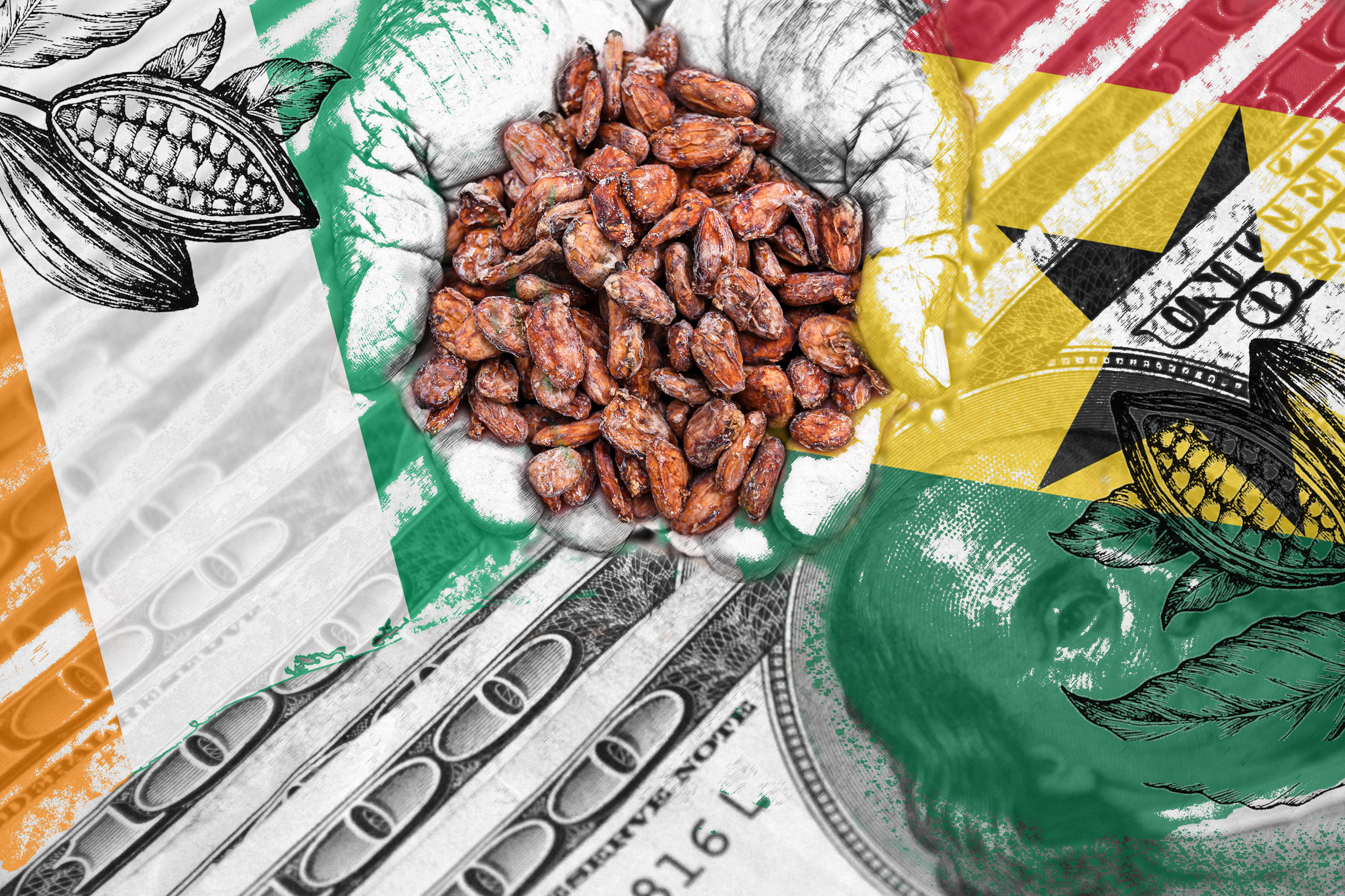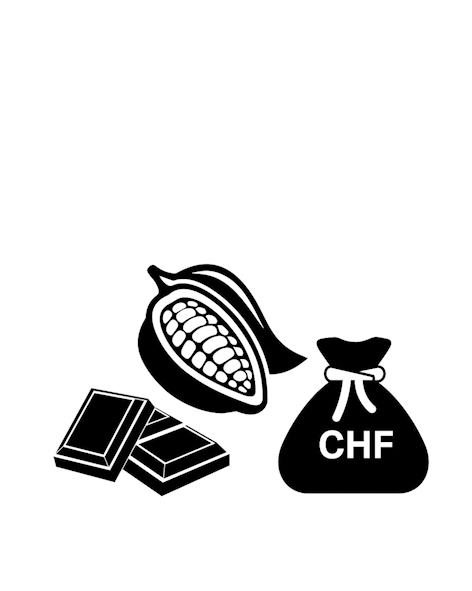
Why the cost of chocolate will keep rising

With Easter less than a month away, sweet-toothed consumers in Europe and North America are beginning to turn their thoughts towards chocolate.
In the UK alone, tens of millions of milk chocolate eggs will be sold. But prices this year are expected to be higher than ever — and it is very little to do with existing inflationary pressures in the market.
Instead, it is a seemingly relentless rise in cocoa prices in recent months that is pushing up costs. Prices of beans have surged to all-time highs, with cocoa futures in New York more than doubling from the same period last year. On Tuesday cocoa futures in London traded at a record high of £5,827 (CHF6,524) per tonne. On the same day last year, they traded at £1,968.

Prices are rising in part because supply is stretched. Poor weather in Ivory Coast and Ghana, which together produce around two-thirds of the world’s cocoa beans, has affected crop yields. El Niño, the sea temperature phenomenon which occurs every three to five years, returned last year, first bringing unseasonal heavy rainfall to the region and then dry heat. The result is a global crop 11 per cent smaller than last year’s season, according to forecasts published by the International Cocoa Organization on Thursday.
Analysts are warning that chocolate makers and brands will pass along higher costs to consumers. If they have not already, they will limit losses by shrinking bar sizes and boosting prices, says Paul Joules, cocoa analyst at Rabobank. Plain bars of chocolate, he said, are also likely to be replaced by fruit and nut bars or other less chocolate-dense alternatives.

More
Can a West African cocoa cartel rise from the ashes?
This is not likely to be a temporary situation. While El Niño has catalysed cocoa’s price surge and market speculators have exacerbated it by piling into futures, deep-rooted structural issues underpin the production squeeze. From climate change to chronic under-investment, these problems will not be resolved with a change in the season.
The model has to be shaken up, says Douglas Lamont, chief executive of Tony’s Chocolonely, a sustainable chocolate brand that pays farmers a living income premium on top of the farmgate price. “Otherwise this is only heading in one direction, with poorer and poorer yields.”
For cocoa farmers like Issifu Issaka, watching the market rally is mind-boggling. On Monday New York cocoa futures traded at $6,648 per tonne. Issaka gets $1,700 per tonne, he says.
Dwindling yields
Faced with rising input costs, bad weather and disease, yields on his 11 acres of land in Bibiani Anhwiaso Bekwai in Western North Ghana have dwindled over the past few years. “If care is not taken,” he says, in the next five years the world’s second-largest producer will see its output halve.
Years of vast cocoa output, especially in neighbouring Ivory Coast which produces nearly half of the global supply, have kept prices low generally. That might be good news for Western consumers, but here it has meant that cash-strapped farmers have not been able to invest in their cocoa plantations.

More
West Africa wants more of Europe’s chocolate pie
Most have not planted new trees since the early 2000s and can ill-afford to use fertiliser or pesticides. As trees age, they become less productive and more vulnerable to disease and adverse weather events.
The past year has brought both. Swollen shoot virus, transmitted by mealybugs, has spread throughout the region’s cocoa plantations. The only remedy for it is to rip the trees out. Adding to this, black pod disease, a fungal infection that rots cocoa pods, has thrived in the humidity created by heavy rainfall last summer.
“The trees are at the end of their lives,” says Nana Arofi Koram, chief of Nuamakrom in the Twifo Atti-Morkwa district, who has 3,000 acres of cocoa plantation land, farmed mostly by tenant sharecroppers.
Some of the trees were planted when his grandfather and then father owned the land, in the 1960s and 1970s. Even the youngest are 30 years old, he says.
The damp weather has since given way to hot arid conditions, which bring other problems for sensitive cocoa trees. “The trees are stressed, the leaves are yellowing,” says Koram, explaining that this reduces yields.

More
How the humble cocoa bean gets turned into chocolate and money
He blames climate change. “It rains outside of the rainy seasons now,” says Koram. “Dry seasons are hotter than they used to be.”
New seed varieties are more resilient to such changes, he says, but as the impact of climate change gathers pace, cocoa farmers do not have the money to adapt. In Ghana many young farmers are abandoning cocoa for easier crops such as cassava, adds Koram.
State protection
The Ivorian and Ghanaian governments have taken steps to protect farmers from consistently low prices.
The Ivorian state-owned Conseil du Café-Cacao (CCC) and Ghana Cocoa Board (known as Cocobod), which establish prices based on an average from the previous season, formed an export cartel in 2019 modelled on oil’s Opec. It introduced a Living Income Differential, a premium baked into farmgate prices of $400 per tonne over the cocoa futures price.
Alex Assanvo, one of the premium’s architects, who heads the initiative that oversees the Ivory Coast and Ghana cocoa alliance, says that today’s supply crunch is the legacy of unfairly low prices, proving that “we were totally right to build a system that would protect farmers and farmgate prices from this current speculative market.”

More
Matterhorn to disappear from Toblerone chocolate bars
Yet while price setting controls may be designed to protect cocoa farmers from the worst of the lows, growers and industry insiders say they also prevent them from benefiting from the highs.
Cocoa farmers operating in free markets, such as Ecuador, know what price they can ask, says Julien Simonis, programme manager of Cacao of Excellence, which aims to de-commoditise part of the cocoa production sector. This means they can cash in, utilising price rises to fund investments that increase production.
Ghanaian and Ivorian farmers meanwhile are hamstrung, he says. Ivory Coast will set a new price in April for the smaller midseason crop, so farmers will get some benefit “but they’re not going to get anything like” the current market prices, says Tony’s Lamont. “There’s a lot of people making a lot of money in the middle.”
From Issaka’s perspective, it is unclear how the prices are set, and it is rare to see the rewards trickling back to farmers. Farmers are supposed to receive 70 per cent of the market price, but he says this rarely happens.
The justification for lower farmgate prices is that the government covers the cost of pesticides and new trees. But in reality such services do not always materialise, says Issaka.
Low prices have an impact beyond farming. Rising cocoa production has fuelled deforestation, especially in Ivory Coast, which has lost around 85 per cent of its forest since 1960.
The European Union is trying to tackle the issue. At the end of this year new rules will come into force which ban the sale in the bloc of cocoa, along with other commodities, that have been grown on deforested land.

More
Toxic cocoa beans: how much cadmium is in your chocolate?
But the law does not stipulate who should bear the cost of compliance, and the risk is that it will fall on already impoverished farmers.
Growing demand
Meanwhile, the world’s appetite for chocolate is only growing. Demand for cocoa has doubled in recent decades, creating a massive shortfall. According to the International Cocoa Organization’s forecasts demand is set to outstrip supply by more than 370,000 tonnes this year.
Deficits are only material if they move the stock to consumption ratio — the amount of stock in the world versus the total consumption — “and is it bloody moving it,” says Nicko Debenham, managing director of Sustainability Solutions, which advises companies.
It is now 31.4 per cent, which has “scared the hell out of everybody”, prompting commercial players to start buying further and further forward, driving the prices higher, adds Debenham, who was previously head of sustainability at Barry Callebaut, the world’s largest chocolate maker.
Small companies will struggle to keep up, he says. “You need double the money to do the same business.”
Even big players are feeling the squeeze. Barry Callebaut said last week that it plans to cut 18 per cent of its workforce. Hershey’s has also announced its plan to trim 5 per cent of its staff, after reporting a drop in year-on-year profits of 11.5 per cent during the fourth quarter of 2023.
A growing chorus of voices argues that this provides an opportunity for change. This is a “great moment for the industry to [commit to paying farmers more] because the [consumer] price is already up”, says Lamont. Instead, he fears, when cocoa prices eventually fall, they will simply pocket the profits.
The risk is that this commits the world to a future where chocolate becomes a luxury good, and farmers in west Africa struggle to survive at all.
Copyright The Financial Times Limited 2024

In compliance with the JTI standards
More: SWI swissinfo.ch certified by the Journalism Trust Initiative




























You can find an overview of ongoing debates with our journalists here . Please join us!
If you want to start a conversation about a topic raised in this article or want to report factual errors, email us at english@swissinfo.ch.